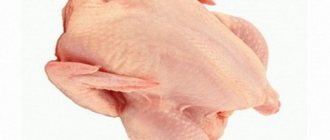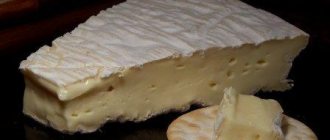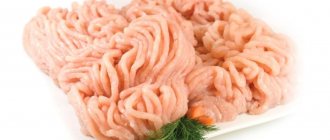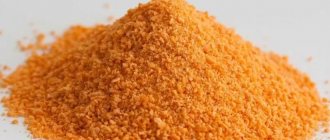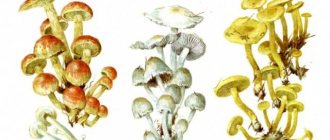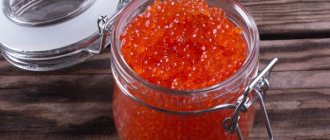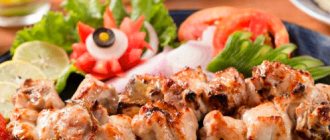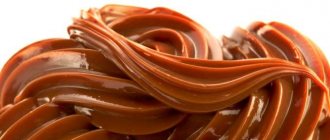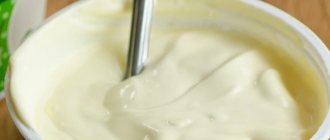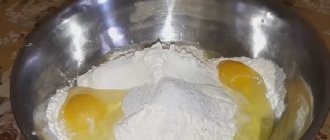Ways to reduce costs
Sour cream production technology includes the process of separating cream from milk and introducing a special bacterial starter into the creamy mass. The cost of the starter is quite high, so many manufacturers do not hesitate to increase the mass of the final product at the expense of other products:
- Thickening components. The most common thickener in sour cream is starch.
- Vegetable fats , which allow you to increase the final fat content, reducing its cost.
- Increasing the mass of sour cream by adding cottage cheese .
Of course, introducing such components into natural cream makes it possible to reduce costs and increase production volumes while maintaining the same level of raw material purchases.
But it is no longer possible to call such a product sour cream - it is a sour cream product, which many manufacturers prefer to modestly keep silent about.
At-home examination: how to check the naturalness of products?
Sour cream or sour cream product, fruits with nitrates, honey with sugar syrup - in laboratory conditions, specialists can easily determine whether the product in front of them is natural or not. Especially for you, we have collected the most popular ways to check the naturalness of various products at home. And some of them checked it themselves!
Butter . If you keep a piece of real butter at room temperature for more than two hours, it will become soft and float a little. But if the oil contains herbal additives, it will retain its original shape well.
Dried fruits. Everything is simple here: just look carefully at dried apricots or prunes in electric or bright daylight. If dried fruits are very shiny, they were most likely greased with vegetable oil to remove mold. High-quality dried fruits will be matte.
Honey. Spread a small amount of honey on thick paper and set it on fire with a lighter - natural honey will not burn, but melt. If sugar syrup is added to it, the honey will char and the characteristic smell of burnt sugar will appear.
Watermelon . You can test watermelon for nitrates like this: grind the watermelon pulp in a small amount of water. If the water turns red or pink, the watermelon is loaded with fertilizer. An environmentally friendly watermelon will simply make the water cloudy.
Chocolate. Place a piece of chocolate in the refrigerator and then over a hot stove. Due to temperature changes, natural chocolate should “grey” - a white coating will appear.
Sour cream . If there are any additives in sour cream, then it is already a sour cream product. And this is easy to understand using a proven method - drop iodine into a spoon of sour cream. High-quality natural sour cream will turn yellow (or turn brown if there is a lot of iodine), and the sour cream product will turn blue or purple.
This is the method we decided to use at home: we took “Savushkin” and “Brest-Litovsk” sour cream and dripped iodine onto each sample. The result—a light brown color—showed that the well-known brand of sour cream is natural.
In general, you can recognize natural sour cream without a home inspection - just examine the packaging of manufacturers with a good reputation. For example, classic natural sour cream is made from fresh selected cow's cream using a starter made from pure dairy cultures. This allows you to give the sour cream a thick, delicate consistency, a characteristic taste and aroma. Only the fat content varies: from 12 to 30%. The packaging of natural sour cream says: made from normalized cow's milk cream using a starter (normalization is bringing the cream to the required fat content percentage).
Watermelon. You can test watermelon for nitrates like this: grind the watermelon pulp in a small amount of water. If the water turns red or pink, the watermelon is loaded with fertilizer. An environmentally friendly watermelon will simply make the water cloudy. Chocolate. Place a piece of chocolate in the refrigerator and then over a hot stove. Due to temperature changes, natural chocolate should “grey” - a white coating will appear. Sour cream. If there are any additives in sour cream, then it is already a sour cream product. And this is easy to understand using a proven method - drop iodine into a spoon of sour cream. High-quality natural sour cream will turn yellow (or turn brown if there is a lot of iodine), and the sour cream product will turn blue or purple.
But if you need more confirmation of the naturalness of sour cream, you can try another popular method among housewives, “cat examination.” Did not hear? But in vain: almost all cats can easily distinguish natural sour cream from a combined product. Since we had already bought several types of sour cream and tested it with iodine, we decided to continue the experiment and offered to try it for our domestic kitten. Let's admit: not all of them were to Murzik's taste. But he emptied the saucers containing the Savushkin and Brest-Litovsk sour cream to the last drop!
Hot water test
There are several simple ways to check the naturalness of sour cream. The simplest test is with hot water. This technique allows you to check sour cream for the presence of vegetable fats. Natural milk fats dissolve at a temperature close to body temperature, while vegetable fats require more serious heating.
To carry out the test, take a glass of hot water (just above +35 degrees) and stir a spoonful of sour cream in it.
If the product is natural, then the water in the glass will turn uniformly white without flakes or clots. Naturalness confirms the homogeneity of the solution without separation and characteristic flakes.
We check whether the sour cream we buy is natural
Our test subjects: "Brest-Litovsk" manufactured by "Savushkin Product", "I'm Happy" - "Brest Ice Cream" and "Prostokvashino" manufactured by "Danone Shklov" (Mogilev).
All representatives have a fat percentage of 20%. Also one composition: cream and sourdough. There shouldn’t be anything else in natural sour cream. If they are present, you have a sour cream product, which by law cannot be called sour cream.
However, we will check further whether these two components are the only ones in the product.
The naturalness of sour cream can be determined in the store. To do this, we look at the composition and expiration date. A good product should have no more than 14 days. It varies greatly among our subjects.
- “Brest-Litovsk” – 11.25.2010-12.25.2020.
- “I'm Happy” – 11/25/2020-12/10/2020.
- “Prostokvashino” – 08.11.2020-13.12.2020.
It can be assumed that manufacturers added cottage cheese or vegetable fats to increase shelf life. The production of sour cream is not a cheap pleasure, so they often try to save money on it.
Already at home, you can examine the product up close and draw the appropriate conclusion. Good sour cream should have a uniform consistency. Lumps, clots, grains, released whey are signs by which one should conclude: in the future it is better to leave this product on the store shelf.
And again iodine. It is this that shows whether starch, which is a thickener, is added to the sour cream. The thickness of sour cream largely depends on the fat content, which affects the cost. However, some manufacturers are cunning. What is obtained in the end should be called a sour cream product, but is sold under the guise of natural sour cream.
In our experiment, no questions arose to any of the manufacturers. Sour cream turned brown when iodine was added.
You can detect the presence of vegetable fats or palm oil using boiling water. Add sour cream to it and stir. The color of the water should become similar to milk. If it is cloudy white, there are no vegetable fats in it. If they are present, the structure of the water will stratify: it will become almost transparent, and white flakes will either float at the top or settle to the bottom.
In our experiment, none of the products dissolved completely, but formed a milky cap at the top of the glass. And here a question arose: after all, the cream used for sour cream should, logically, curdle in boiling water. However, it turned out that I was wrong (at least numerous articles on the Internet say exactly this). The milk fat used in natural sour cream dissolves. Can't curl up.
You can also draw a conclusion about the additives present by looking after some time at the sediment on top of the glass. If it is large enough, it contains unspecified components. How much you can trust this information is unknown.
Glass can be used in experiments. To do this, place a small amount of sour cream on top of the glass and watch how it spreads. If the stream looks like milk, then this indicates naturalness. Stains will indicate the presence of additives.
The text is educational and entertaining
Visual assessment
Do not neglect the visual assessment of the contents of the glass labeled “Sour cream”.
Signs of a high-quality fermented milk product will be:
- Homogeneous creamy consistency without lumps or flakes.
- Uniform white-cream color.
- Pleasant light characteristic sour-milk smell without harsh notes.
- Clean slightly sour taste.
Pay attention to the condition of the product; if a separation of consistency, stains, a watery or oily layer is visible to the naked eye, do not use such sour cream.
Doubles
Sour cream prepared using classical technology cannot be called a “sour cream product”, “sour cream”, “sour cream” - all these are tricks of unscrupulous manufacturers who are trying to mislead the consumer and sell something under the guise of sour cream that is not it.
- At best, it is also a dairy product made from cream. However, to keep the product longer, it is pasteurized. As a result, it will be the same pure, with the same taste, the same consistency, but there will be no living microorganisms in it (those 1 × 107 CFU/g), so it is no longer so healthy and cannot be called sour cream.
- If the package says not “GOST”, but “TU” (technical conditions), in this case we are most likely faced with a non-classical method of making sour cream. It will also be called sour cream, it will also contain 107 CFU of lactic acid organisms, but it will not be made according to GOST. What is it? This is the so-called technology of recombined sour cream, that is, when not classic cream obtained as a result of milk separation is used, but, for example, milk is taken and butter is added to it (of course, high-quality, prepared according to GOST). All this is mixed and brought to a certain mass fraction of fat, as if it were in cream. Then everything is fermented.
That is, according to GOST, it is impossible to use butter for the production of sour cream, but according to the technical specifications, according to the standards of organizations (STO), this can be done. Therefore, when buying sour cream made according to GOST, you can be sure that this is “grandmother’s classic”, and when buying sour cream prepared according to specifications, you are dealing with a product produced according to the company’s document (in other words, according to your own recipe). But this does not mean that the product you have chosen is of poor quality.
What might be included in this sour cream? Most likely, on the packaging you will read the following composition: “reconstituted cream, sourdough” or “milk powder, butter and sourdough” - that is, different recipe options.
